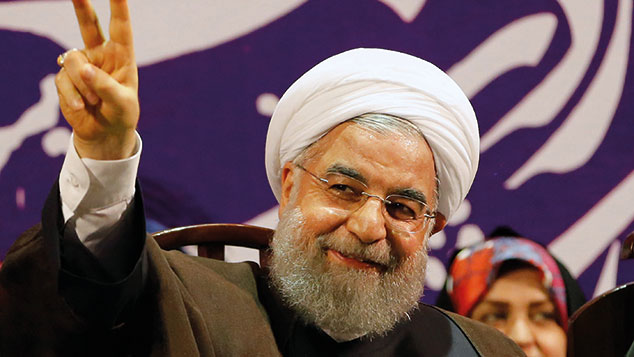
The anti-government protests that erupted in Iran last Thursday started as a “narrow demonstration” over the rising price of eggs, says The Daily Telegraph. But they rapidly spiralled into the most serious challenge to Iran’s clerical regime since 2009. So far, at least 22 people have been killed. This uprising is much larger and more widespread than the protests against electoral fraud a decade ago. It was driven by workers, not students, and is spreading across the country.
Protestors are now calling for Supreme Leader Ayatollah Ali Khamenei to step down. In Tehran, protestors stood in front of a mural of Khamenei and shouted “death to you”. Publicly threatening the Supreme Leader, who is believed to be God’s representative on earth, is a crime that carries the death penalty, says Farnaz Fassihi in The Wall Street Journal. Such high-risk tactics show how high tensions are running.
Grievances in Iran have been rumbling for far longer than a week. There were high hopes, both in Iran and abroad, that a nuclear deal with world powers in 2015, spearheaded by the Iranian president Hassan Rouhani, marked the start of a better future, says The Wall Street Journal. The deal removed a large tranche of international sanctions in return for curbs on Iran’s nuclear programme and unfroze $100bn in Iranian assets.
The Obama administration believed that this would fund a Rouhani-led liberalisation, leading to a prosperous, modern Iran in which the use of nuclear weapons would be “unthinkable”, says Roger Boyes in The Times. The Middle East would be stabilised.
Instead, Iranian money has been used to prop up Syria’s Bashar Assad and bankroll a “policy of military adventurism”, including the funding of Hezbollah terrorists in Lebanon. Although Rouhani’s recent budget promised to spend $4.8bn on job creation, he has angered every sector of society by announcing it will be paid for by cutting fuel and food subsidies and by imposing a levy on foreign travel.
The 2015 deal “whetted Iranian appetite” for change but “failed to deliver in a practical sense”, says the Financial Times. Iranians are now “tiring of a regime that squanders resources on foreign adventures, instead of devoting them to development at home”. Rouhani must pay heed to the protestors, but “meddling by outsiders” is not the answer. It provides hardliners “with the perfect alibi for a crackdown, which can only undermine Rouhani further. Within the current system he still represents the best hope of change.”
No, he doesn’t, says The Wall Street Journal. The idea that there is a difference in policy between the Supreme Leader and the “supposedly moderate” Rouhani is an “illusion”. Rouhani says he hears protestors’ grievances, but his conciliatory stance will “last only until the Ayatollah gives other orders”.
The description of Rouhani as moderate is absurd, agrees Charles Moore in The Daily Telegraph. Western elites have “over-invested” in his regime on this basis, and you can “bet your bottom euro” that most will “shirk” from using “soft power” to back Iranians now. “Yet a liberal, secular Iran, demanded by its own people, is exactly what the West should want.”
The Ayatollahs talk of a “hidden hand” behind these protests, by which they mean America, but there is “no need to hide that hand”. President Trump has, encouragingly, told the Iran regime that it is right to fear its own people.
Europe needs to reconsider its policy, agrees Roger Boyes. Social media is a potent tool that the West can use to support civic resistance. “Any hint of counter-revolution terrifies Iran’s clerical rulers” and Khamenei is 78, ill and has a “nervous disposition”. For Iranians there is now a “clear choice”; “between guns and butter. We should nudge them towards the right future.”